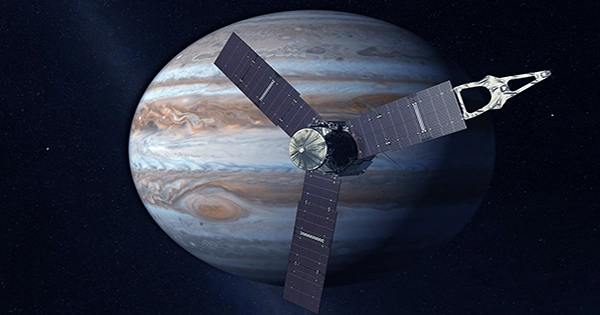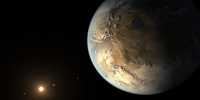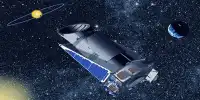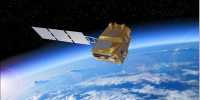The ice moon Europa of Jupiter was recently viewed by the Juno spacecraft from a distance of only 352 kilometers (219 miles). These initial photographs were captured during the flyby. The flyby, which was closer to Earth than most satellites are, was made in an effort to better understand the mysterious planet as well as to go into a closer orbit near Jupiter.
The last time a spacecraft came within three days of Europa was when the Galileo mission flew low over its icy surface in the year 2000. Its reputation as one of the planets of most interests to astrobiologists searching for possible life in the Solar System was verified by the discoveries made at the time regarding Jupiter’s fourth biggest moon. Prospects for a century of exploration have, however, taken a while to materialize.
It will be at least eight years before another spacecraft makes a close approach, but the new photographs captured by Juno will be examined for a very long time and likely inspire hundreds of research articles.
Even though Juno’s minimum distance from the surface was one kilometer farther than Galileo’s, the photographs captured by JunoCam already have a more excellent resolution – 1 kilometer (0.6 miles) per pixel – than those acquired by Galileo. Astronomers anticipate learning a lot from the observations because imaging technology has advanced significantly in the last twenty years. Galileo’s observations are still being used to make fresh discoveries today, even if its photos were only recently reprocessed to be considerably crisper.
The Juno spacecraft also has gravity sensors, high-energy particle detectors, and equipment to observe the ultraviolet, radio, and microwave portions of the spectrum. Each of them could yield significant data from the observation of Europa’s surroundings.
“Juno’s flyby of Europa was a terrific success,” said Scott Bolton of the Southwest Research Institute in a NASA statement. “It’s very early in the process, but by all indicators, it was,” he said.
By capturing photographs of the terminator, or the line separating day and night, JunoCam could highlight the ridges and troughs that conceal Europa’s larger-scale smoothness. It’s possible that the hole just to the right of the center, close to the terminator, is a unique remaining impact crater. If this is a crater, it must be relatively recent because it is believed that changes in Europa’s oceans create shifts in the ice that swiftly deteriorate craters that would persist for billions of years on most other worlds.
Europa had only been the smallest and least fascinating of Jupiter’s four large moons up until the Voyager missions in 1979, four centuries after its discovery. Since it wasn’t given priority over Amalthea or any of Jupiter’s other three large moons, Voyager 1 passed it at a far longer distance.
The smoothest object in the Solar System, nevertheless, according to Voyager 2, is the result of an ice crust covering an interior ocean. As the outlook for life on Mars and Titan grew bleaker, astrobiologists and science fiction writers alike began to speculate about the possibility of life in deep space.
Plans were made for a future lander as well as for the Europa Clipper to concentrate solely on this one moon rather than Jupiter and its other satellites as it had in the past.
However, after Galileo’s close approach in 2000, financial restrictions prevented any additional visits. Internal oceans are fairly frequent among outer Solar System satellites, and even Pluto may have one, according to later missions. Astrobiologists’ attention has since returned to Mars and Saturn’s moon Enceladus, whose powerful geysers boost the possibility of collecting samples of the ocean there.
However, because Europa has the potential to be so significant, work on the Europa Clipper is already well under way, and NASA is still researching the options for a lander. Despite being set to launch in 2024, the Clipper will require two gravity assistance from Mars and Earth to reach Jupiter by 2030.















